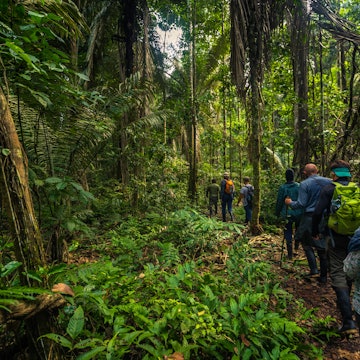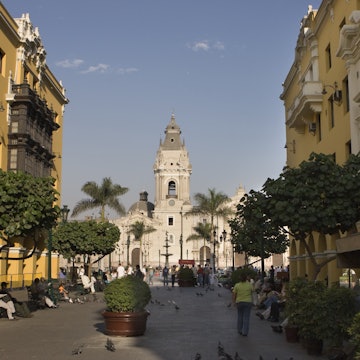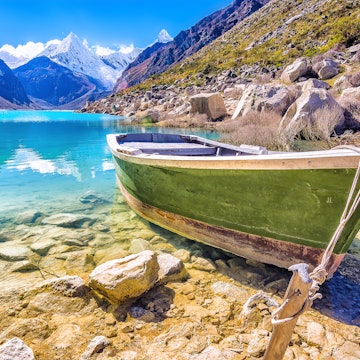

© Gianella Castro
Overview
Peru is a land of skyscraping peaks, vast jungle, and multilayered archaeology. From the world’s tallest tropical mountain and highest navigable lake to rich biodiversity that ranks among the globe’s greatest, Peru offers both natural and cultural wonders. History seekers can explore Caral-Supe, the oldest-known civilization in the Americas, alongside ancient marvels like Kuélap and Chavín de Huántar, while adventurers can trek rugged Andes trails, wander deserted ruins, or swing from a hammock deep in the Amazon. You’ll find endless Peru travel inspiration across its three distinct regions: the misty Pacific coast with surf beaches and prehistoric sites, the snow-dusted Andes crowned by Machu Picchu and the Cordillera Blanca, and the lush Amazon Basin stretching from Iquitos to the untouched wilderness of Pacaya-Samiria. Not sure where to start? Plan your adventure with our travel inspiration and tips covering top attractions, when to visit and expert advice.
Leave the planning to a local expert
Experience the real Peru. Let a local expert handle the planning for you.
Must-see attractions
Planning Tools
Expert guidance to help you plan your trip
Best Things to Do
From the Andes to the Amazon rainforest to the stunning coast, Peru offers endless adventure.
Read full article
Best Places to Visit
It's hard to know where to go in Peru – known for cuisine, culture and biodiversity. Let this list of 13 kickstart a visit to this South American darling.
Read full article
Best Time to Visit
Whether you're a foodie bound for Lima or an adventurer heading for the Inca Trail, find the perfect time for your Peru vacation here.
Read full article
Things to Know
Here's what you need to know about culture, etiquette and safety in Peru before you travel to this mesmerizing South American nation.
Read full article
Transportation
When you invest extra time in planning your trip to Peru, you'll reap dividends. This guide will help you get around with ease.
Read full article
Money and Costs
Peru has long been a destination for backpackers on a budget and now other travelers have caught on – here's how to make your money go further on the road.
Read full article
Traveling with Kids
Every adventure-seeking family with a great appetite should have Peru on their "dream destinations" list. Here are the best things to do there with kids.
Read full article
Best Road Trips
These road trips are worth the investment and effort, from archaeological sites to jungle adventures and stunning beaches. Don't miss this version of Peru.
Read full article
Get Connected
Stay fully connected on your next trip to Peru with this guide to local wi-fi networks, roaming charges, eSIMs and data
Read full article
Get a book. Get inspired. Get exploring.
in partnership with getyourguide





















